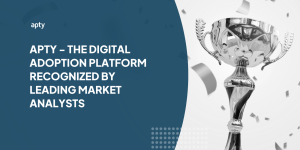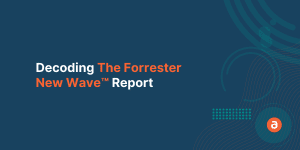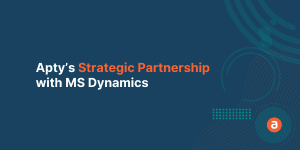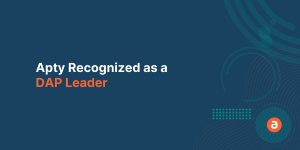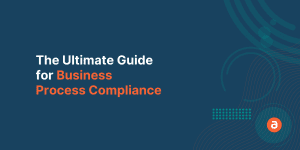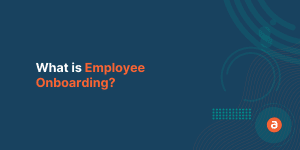The learning and development landscape is changing rapidly. As we start with an all-time low attention span of 8 seconds, which is less than that of a goldfish, learning needs a new approach.
But what kind of approach is required?
Organizations must focus to reduce time when they create courses and must adopt alternative ways to train their employees.
Here we are going to understand why saving money and time using an alternative approach is a must. Also, we’re going to cover:
- What is a learning and development?
- What is a learning and development strategy?
- How to design and develop learning programs?
- Learning and development plan
- Learning and development tools
- Why Invest in Next Generation Solution Tools?
What is a learning and development?
Learning and development is a plan of action to provide employees with the necessary skills, knowledge, and competencies to grow professionally, develop the company culture, and ensure optimal capital development in the process.
What is a learning and development strategy?
A learning and development strategy is a roadmap that allows a company to train and develop its employees’ skills for their career benefit and the good of the firm and its customers.
L&D strategy is your approach to onboard your employees when you hire them and boost their skills over the course of their time with the organization. You should strike a balance between helping your employees develop their skills and ensure they are being productive at all levels.
How to design and develop learning programs?
A learning program must identify its purpose, the outcomes, the target group, the learning, and evaluation strategies. While designing learning programs, it’s required to define the program’s purpose, the competency standards, the scope of the program, the learning environment, and additional resources.
- Identify what needs to change. Define the organizations goals, priorities, and vision in line with the project’s budget, timeline and employee needs to identify areas that need to change.
- Enlist the support of top management. Effective L&D strategies rely on the company leadership, key stakeholders, and influential employees to align the collective objectives.
- Assess employees’ skills and competencies. Set precise job requirements for targeted roles and responsibilities to act as a benchmark for assessment of employee skills and capabilities.
- Define the training process, and programs to assist your training. Determine what to include in the L&D program, tailor the process to accommodate employee work and onboarding, and design the program to be continuous.
- Determine KPIs and the review schedule. Be clear on which key performance indicators, including course completion rates, number of courses completed, or time spent on each course to measure success and continuously review the studies and training programs to evolve with the times.
Learning and development plan
A learning and development plan showcases how an organization develops its workforce’s abilities, competencies, and proficiencies to remain successful. It’s a core part of the overall business strategy, which examines the various stakeholders involved in organizational development and learning.
Workers need to boost their skills and upgrade their existing knowledge to perform better. Through employee learning and development program, you can give your team the talents they have to boost their day-to-day work and outcomes.
Learning and development plan
The following are the effective steps for L&D managers to implement their strategy and develop better outcome,
- Understand your business strategies
- Establish ownership of L&D between department Heads
- Set clear L&D and training goals
- Design learning activities to meet those goals
- Perform employee skill gap analysis
- Invest in enterprise learning and development software
- Launch your L&D Strategy
- Evaluate results and refine as needed
Learning and development tools
Giving access to the necessary tools to your employees directly impacts productivity in the workplace. Unskilled employees could postpone work and mismanage the provided resources, which might cost the company enormously. The worst management strategies and a lack of access to vital tools result in employee disengagement. It’s the reason for decreasing individual product performance.
Without the right tools, they can’t work quickly, and there will be significant errors in their output, which will be time-consuming to correct. With the right technologies you can increase the productivity levels of your employees.
Why Invest in Next Generation Solution Tools?
There are five moments of learning needs which were described by Bob Mosher and Conrad Gottfredson’s:-
- Learning for the first time:- This needs tools like LXP where on-demand courses are made available and the user can learn for the first time.
- Learning more about a particular topic:- Here user can again go back to the source and learn that one particular thing that he missed. OR, the user could use PDF, PPT or videos made by using DAP.
- When things change (Change):- This would need external interference but if the change is not that big it could be done using DAP solutions as it can show in real-time how to do a particular job in an application. Moreover, it pushes the user to the source via permalink which could be created in DAP itself, it usually consumes less time.
- Applying what you’ve learned (Apply):- Whatever is learned via any form of training could be reinforced using PPS or DAP as it makes users learn by making them do things in real-time.
- When things go wrong (Solve):- When a user gets stuck in such a situation, the intuitive DAP solution will guide the user but even if that’s not enough the user is pushed to the PDF, FAQ, videos or PPT via a link that was created using DAP.
As you have seen above DAP solutions make you’re the creation and consumption of content easy.
The investment in training is increasing gradually as organizations are seeing the value in it.
The amount of money that the organizations spent in the US alone in the Year 2018 is somewhere around $87 Billion.
Whatever the employees learn 70% of that is forgotten in a span of 24 hours.
Hmm, let that sink in.
Organizations often spend huge on training without analyzing the kind of money they could have saved if they would have done it effectively.
No doubt Spending on training is rewarding but when it can be optimized why one has to spend more for doing the same thing?
Some authoring tools offer VR based training which is not required when you can do the same thing in real-time using Digital Adoption Solution.
Face-led training also has it’s share of the problem as you invest for a day hoping that in this one day employee will learn most of the stuff but in reality, thanks to the forgetting curve 90% of them would forget whatever was thought to them in a span of a month.
All these unnecessary things add up to your cost.
The organizations must complement the learning experience that they provide via LXP with DAP or PPS solutions to reinforce the learning of their employees. As a result, this enhances the outcome and most important things of all save money and boost their ROI.
As we are in 2022 and in a span of 5 years we would be in a spot where 75% of the workforce would be Millenials. The need for on-demand training or guidance is must-have, as Millenials prefer on-demand training over any other form of training.
“Organizations often shoot the arrow in the dark and expect it to hit the bull’s eye.”
This kind of approach cannot be rewarding. Organizations must start giving serious thought on investing in unnecessary forms of training which could have been easily executed using alternatives like Apty.
Invest in a robust tool like Apty to boost employee performance and productivity. Apty is fast to deploy and easily scales as you add new teams, locations, or applications. Accelerate user onboarding by 2x, reduce training & support costs by 80% and cut feature adoption time in half with Apty.

